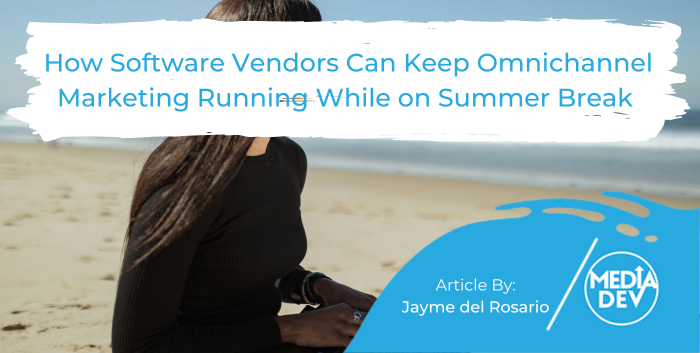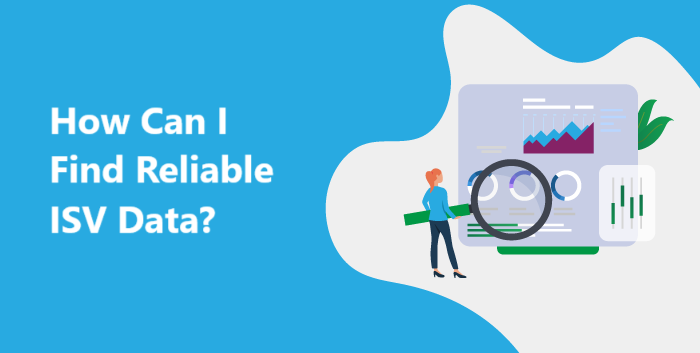I’ve seen it a hundred times: Marketers calculating ROI based solely on sales figures. Well, not only am I going to tell you why this method is all wrong, I’ll give you some food for thought that you can take back to your bosses (which I hope will push them to change their tunes forever).
I have worked with many marketers over the past 12 years that I have worked at MediaDev. And while all of them have good intentions when trying to calculate the return on investment for the marketing campaigns we run for them, not one of them has taken the time to consider the bigger picture. They get out their calculators, take the total cost of the campaign, divide it by the volume of sales they got out of our leads, and come up with a number. With a little luck, that number is a positive one. But here’s one of the problems with that: not only are sales cycles often very long in B2B software sales (which means calculating ROI may take upwards of a year to do so with any level of accuracy), but it also doesn’t take into account the outreach that was done to increase brand awareness or educate prospects about the offer (who may in time turn into qualified opportunities when they are more sales mature).
Here’s another problem: when you promote content online, you have no idea of the residual side-effects that that effort will have. Establishing presence, credibility, and trust for your brand is a process that happens over time. It’s a longer-term strategy and never an immediate “quick fix” or a straight line from visibility to sale. So it’s nearly impossible to take that into account when calculating ROI in the traditional sense. And I can tell you from experience — there are more people out there being exposed to your brand than you think.
I also think it’s a mistake to run campaigns quarter per quarter without taking a more holistic approach to your marketing efforts. Running a campaign for a set buyer persona that only lasts one quarter is really looking at marketing in a silo. I understand that sales teams always have quarterly objectives and that marketing’s job is to provide leads to help the pipeline flow, but the more effective method is to have an “always-on” outlook that runs across channels, both on and offline.
Let’s not forget that one of the most effective methods of acquiring new business is through word of mouth marketing, which comes from relationship building and brand reputation management. Making sure that your existing clients are satisfied with the software or service they’ve purchased is the number one must-have for any business; people that love the products they use are happy to recommend them to their entourage (friends and strangers alike). Ensuring that your prospects get their questions answered quickly and with pertinent information, that your content addresses their needs, and that you create a forum where they can interact with your clients to understand how the product works, are all important ways of helping establish a good reputation. Creating an inbound help desk will also help you quickly resolve user issues and increase customer satisfaction (which can even lead to up-sale or cross-sales opportunities). But again, how can you account for those types of activities when you calculate ROI based only on finalized sales deals alone?
Calculating ROI should be customized for each business context and should be tweaked as that context changes. As the market evolves, so should our ways of evaluating our performance as marketers — especially since we are not always in control of what sales do or don’t do with our leads. Aligning marketing and sales is a critical element that is often talked about, but frequently ignored or brushed off as being too time-consuming. Requiring sales feedback on each and every lead may be tedious, but it’s absolutely necessary if true ROI is ever going to occur. (Although, I would certainly argue that differences between sales agents is another area that needs to be looked at in-depth since not all salespeople are created equal.)
In order to optimize the way we calculate ROI, we need to change our thought process. Here are some questions that you should ask yourself when creating a customized formula for your business:
- How many net-new prospects engaged with your content last year? Is this number on the rise, or is it decreasing? Out of those net-new prospects, how many engaged repeatedly? Is social selling part of your outreach plan? If so, how many sales meetings did you confirm via this channel?
- If account-based marketing is part of your strategy, how many decision-makers within your list of priority accounts have you been able to opt-in? How many have responded positively to your outreach? Have you gathered marketing intelligence on the accounts themselves that can help you with your marketing messaging?
- If social media presence is important to you, how many new in-target followers do you have? What is your typical post reactivity rate? How many inbound inquiries have you gotten as a result of your online (paid and organic) strategy?
- Do you conduct win-loss interviews as part of your sales process? What actionable insights have you been able to gather in doing so?
- Have you ever performed a customer satisfaction survey? How do you stay in touch with your customer base to ensure their fidelity? How do you encourage your clients to recommend you to other potential users?
Calculating ROI is not a simple affair, which is why it is so important to resist the tendency to oversimply it! By seeing the bigger picture (and showing it regularly to your boss) you should be able to get support for building a pipeline across channels that is valued in and of itself regardless of direct (traditional) ROI calculation methods. By using a combination of key performance indicators that you have determined for each channel, you can see where the results are satisfactory, and where they need improvement.








